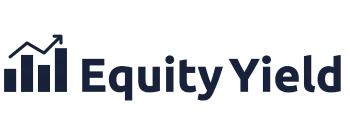Many of us in commercial real estate have been given the following explanation of what a cap rate is:
“a cap rate is a shorthand determination of a property’s value based on the amount of cashflow it produces. A cap rate is calculated using the formula cap rate = NOI/Purchase price.”
This a good description of what a cap rate does but it is not a good explanation of what a cap rate is.
It doesn’t really tell us much about the independent factors that drive cap rates and property values, and as continued market volatility leaves many of us asking what the future has in store for the real estate market and property values, it is important that we understand the underlying forces that drive cap rates.
Three factors that drive cap rates and the value of multifamily real estate
- The efficiency and cost of the capital used for the investment
- The perceived inherent risk of the investment
- The expectation of future growth
So, how do each of these factors play into today’s market conditions?
Cost of capital
The cost of capital has increased significantly over the last twelve months. This has certainly put some upward pressure on cap rates. In many markets we are currently seeing significant price adjustments from sellers as a result.
However, interest rates also dampen demand pressure for single family homes and can increase demand pressure for rental housing. This, along with migration trends and population growth, can lead to higher expectations of future growth which would counteract cap rate expansion, and put downward pressure on cap rates.
Perceived inherent risk in real estate
In terms of perceived risk, the current market volatility has many investors waiting on the sidelines. I think there is currently a lot of perceived risk around asset values, which puts upward pressure on cap rates and makes it very hard for short term investors to make any sound investments.
However, successful multifamily investment has always been a long-term game. I believe there will be opportunities for smart investors who invest for cashflow, purchase with long term fixed rate debt, and are looking forward at the likely value of these assets five to ten years from now.
In terms of actual risk, real estate in and of itself is very low risk. If you purchase cash flowing real estate with cash and carry proper insurance, you have almost no risk of losing your investment. Given enough time, the cashflow from the property will have paid back your investment, or you can wait until market conditions are ideal to sell your property for a profit.
It is only when we introduce debt and leverage that we bring a certain level of risk to the real estate investment. As long as this is a known and calculated risk, leveraged real estate investments can provide investors with great risk adjusted returns.
The expectation for future growth
If we are investing in a growth market, where we expect population to increase over time, where we expect incomes to increase over time and where we expect demand for rental housing to outweigh supply of rental housing, we are going to expect rents to increase over time and therefore our net operating income to increase over time as well.
If we are comparing two investments – one in a stagnant market and one in a growth market – we will expect profits over time to be higher in the growth market and therefore, we should be willing to pay a higher price for the asset in the growth market. These means that cap rates in this market should be lower than cap rates in a stagnant market.
The expectation of growth in a given market is therefore a significant determinant of cap rates in that market. Over the last few years, we have seen significant demand for multifamily investments in the South-East because this is where growth has been evident and where continued growth is expected.
Just because cap rates in some of these markets are lower, does not necessarily mean that these markets are over-priced. It may just be a signal that growth in these markets is expected to be a major driver.
As usual, it all comes down to risk and reward
Ultimately cap rates are really about assessing the underlying risk-reward profile of a real estate investment opportunity. But remember, real estate investing is hyperlocal and market conditions, property values, and cap rates will vary market by market.
In today’s volatile environment, it is important to understand the specific factors that determine risk, value, and future growth. Manage the downside risk, such as leverage, and look at the trends within your market to be sure that you are investing in real estate that will appreciate over the long term.
